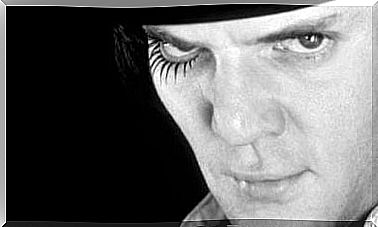The Obsessive Personality: Traits And Characteristics

Everyone knows or has come across someone who we can say has an obsessive personality. However, labels such as “he’s obsessed” often lead to misunderstanding and stigmatization. Instead of helping, they achieve the opposite effect.
In this article you will learn more about the personality profile of obsessive people, as well as see clarified other important points, such as what differentiates them from people who suffer from obsessive-compulsive disorder. Do not miss it.
What is an obsession?
From the point of view of psychology, an obsession is an idea, belief, mental image or habit that repeatedly invades the consciousness of the person and compromises the ability to control the line of thought. That is, the person does not have the ability to stop thinking about the object of the obsession and falls into a rumination that feeds itself.
However, a pathological obsession is not the same as having an obsessive personality. The latter marks a trend more related to a personality trait than to a disorder. In the following lines you can see the profile of the obsessive personality.

What is obsessive personality?
The obsessive personality is not a disorder, but a general tendency of the character of a person that does not produce discomfort or interference with daily life.
In general, they are individuals who, when they find an activity that they like, get “hooked”, that is, doing it produces more and more reinforcement – instead of habituation.
In developed societies – marked by an organized and disciplined lifestyle – it is more common for the character of the individual to tend to obsession, since high labor productivity, efficiency and hard work are reinforced by the system.
When this personality archetype begins to approach the worrying, they often receive warnings from the environment, since they neglect other aspects of their life such as interpersonal relationships or leisure. However, they are often unaware that they are obsessed.
Obsessive personality disorder
As you read above, the object of obsession of this type of profile reinforces itself each time it is performed. But where is the boundary between “I am like this” and “I have a problem”?
There are no objective measures to mark the limit of how many hours you spend in the gym, or playing video games, or even working, for example.
Given the need to delimit the pathological, the DSM-V established that those who suffer from this disorder usually present a general pattern of concern for order, perfectionism and control. They are characterized by a marked lack of spontaneity and there comes a point that their behavior does not produce positive results in their efficiency and productivity, but rather the opposite.
Rumination is another of the most important aspects of this disorder, and this often goes hand in hand with anxiety and fatalistic thoughts. When these people become aware of the problem, they usually show that they lack the ability to stop obsessive thoughts, and the fear of the appearance of their own obsessions begins.
Obsessive personality differentiation from OCD
Obsessive-compulsive disorder (or OCD) is an anxiety disorder, not a personality disorder. In fact, people who come to consultation usually refer directly to obsessions or compulsions, but obsessive disorders usually refer first to anxiety or stress.
In this picture there are specific obsessions that are associated with compulsions that help eliminate the anxiety they cause. The latter tend to be very strict and have a ritual character. In addition, the person is fully aware of how this affects his life, as it causes him suffering.

Final notes: how to keep obsessions at bay
Although this personality style does not have to be a disorder, it is still important to keep the pathological tendency under control. To do this, here are some ideas:
- Identify the addiction : a good self-observation is important to detect in time if you are falling into something that you cannot control. Listen and analyze the environment, as it is where the signs that something is wrong come from.
- Regain control : if you doubt whether something is haunting you, there are various techniques to check it, such as spending a week without doing that time-consuming activity.
- Train the ability to disconnect : create spaces where the mind moves away from obsession or carry out activities to change the course of thought.
Finally, we could emphasize that it is important to diversify and combine the sources from which our well-being draws. In this way, as is the case with the economy, when one facet suffers we will be able to maintain a balance with the good drift of the others.









